The Ministry of Defence has awarded a contract for two advanced 3D metal printers as part of an effort to enhance its logistical and manufacturing capabilities.
Valued at £383,000, the contract was secured with Additive X of Ripon and spans from 14 March 2024 to 30 March 2030.
This procurement is part of a broader effort to modernise the tools and technologies at the disposal of the Royal Navy, particularly to address challenges associated with obsolescence and the availability of critical components.
The printers are designated for Her Majesty’s Naval Bases (HMNB) Devonport and Portsmouth and are aimed at enhancing the Forward Support Unit’s ability to rapidly design and produce metallic items, moving beyond the limitations of previous polymer-based manufacturing processes.
According to the contract notice, the printers are expected to significantly advance the MoD’s manufacturing capabilities.
“The AdM machine must have the capacity to manufacture metallic items…able to manufacture parts up to 250mm x 183mm x 150mm, not exceeding 10Kg. It must have the capacity to manufacture from stainless steel (eg 17-4 PH), tool steel (eg H13-A2, D2), Inconel 625 (or equivalent) and Copper.”
This technology features “a 2 nozzle print system with metal and release materials,” and includes “separate wash and sintering machines,”.
The primary application of these printers is detailed within the contract description.
“Forward Support Unit (B&C) have a requirement to increase capability to design and manufacture metallic items using AdM as existing polymer manufacturing severely restricts the scope of this technology…This organic capability would save significant costs to upkeeps/FTSPs by offering a quick manufacturing capability for obsolescent or temporarily unavailable stores items.”
Part of the contract includes a comprehensive training and support plan, ensuring that personnel can effectively utilise this new technology. The contract specifies that “The supplier, or their representative, shall provide comprehensive training in the use and maintenance of the printing machine and software applications as part of the machine Set to work, onsite at HMNB Devonport and Portsmouth, 4 personnel at each site, totalling 8 combined.”



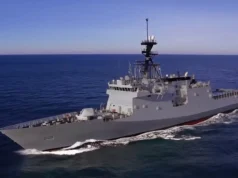
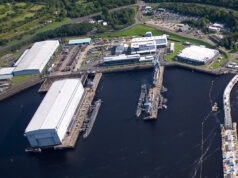
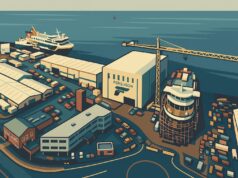

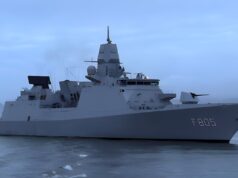

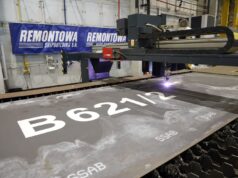
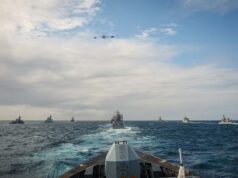


This all sounds very sensible
Yes.
The sounds a very good idea.
Some parts could be printed in the field if required – just need a 3d printer on board.
That’s the intention and has been extensively trailed in practice on HMS Defender, evidently, using plastic based parts; and more recently to common parts requirements under a new AUKUS Additive Manufacturing partnership therefore extending this concept beyond plastics into metals, as above.
Bloody goodo
The RAF’s 71 Inspection & Repair (IR) Squadron was established at RAF Wittering back in 2020 and is now doing a lot of innovative work using 3D printing to produce complex components for damaged aircraft.
According to RAF press release “The Squadron aims to deliver engineering manufacture and design capabilities in deployed locations, to repair damaged structures on fixed-wing military aircraft.”
So, for example, instead of waiting days or weeks to get a spare for, say, a Typhoon aircraft, the item could be produced in hours either back at RAF Wittering or even ‘in situ’, wherever the aircraft may be located.
All good stuff…
Long been of impression* that for the most part our Armed Services are trying hard to deliver regarding the multitude of tasks demanded them by Government. Delve a little deeper than the headlines and instances of innovative thinking and practice soon come to the fore, like the above, and all phases of AUKUS at a macro level. Maritime: local basing, duel crewing, OPVs, even ffbnw and the worst of UK habits – gapping! Nevertheless the list goes on viz partnerships with tech companies and colleges, cadets, local service led recruitment initiatives…..
But there’s only so much efficiency you can extract from innovative thinking, inadequate numbers of flogged equipment and sore-tried but duty-led people (who do the blood-letting, ultimately) – no matter the strenuous levels of effort.
Looking for similar *impression of reward in the shape of more funding. Not effectively, You can manage, keep up the good work…..; we do have an aspiration……
The country depends upon it!
Slight hint of common sense being used for a change🙄
“This organic capability would save significant costs to upkeeps/FTSPs by offering a quick manufacturing capability for obsolescent or temporarily unavailable stores items”
Not to mention the reduced costs of storing piles of small parts that you don’t need very often.
The game changer is when you can have one at sea. On something like QEC or the larger RFA’s that would be very possible and then you have a very fast lead time for a huge variety of spares.
Hmm, what a really clever thing to put on RFA Diligence…if she wasn’t being turned into razor blades.
Getting more Like Star Trek every day:
Phasers
Communicators
Tricorders
Tablets
Computers
Replicators
and we even have the Borg who have no problem uttering the immortal words “Resistance is futile , you will be assimilated ”
Right going to have a Earl Gray Hot. (Actually my fav drink)
Splice the T bag
Tommo wrote:
“”Splice the T bag””
Damn hard to find a decent Earl Grey T bag, so tend to use loose tea, but the best one found so far is Birchalls Virunga Earl Grey Tea,
Good on yer Farouk forgot you were Army although you did those fast pump Boats so you’d know those nautical terms
3D printer. Engage……..
Sounds like a cracking idea, and quite exciting too.
Plan Bravo to expand the fleet, in small increments. 😉
I can confirm FSU has been using 3D polymer printers for some time and with great success.
Believe it or not the RN stores support organisation is surprisingly good at getting the big bits of kit that you need to fix things.
What it’s not good at and never has been is the small simple bits. Things like knobs for rotary switches have always been a nightmare to get. They are not codified and if you need one it means ordering the next largest part which could be a 100K GBP electronics rack so that you can get the 20pence Bakelite knob off the front of it!
With these metal printers it’s another plus in the engineer’s arsenal of stuff to use to fix things. However, you will no doubt need to jump through a mass of project and equipment risk assessments, approvals and Risk Managers sign offs to be able to use a printed part until a “real” item can be delivered, especially on safety critical items. Hadden-Cave is never very far away…
REME was issued 4 x Makespace 3D printers in Aug/Sep 2020 for the Field Force.
They are building 3D printed houses nowadays. Why not 3D printed Ships?